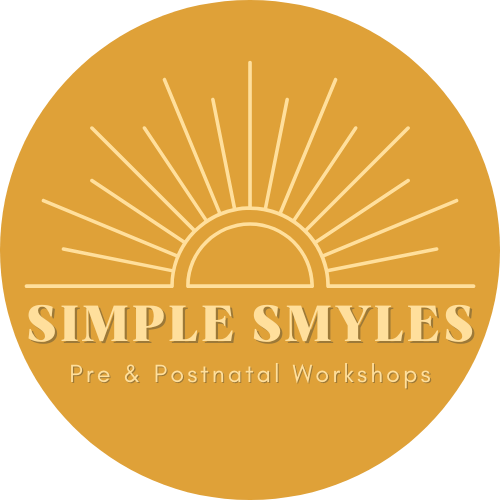The Beauty of Babywearing: Bonding, Comfort, and Hands-Free Parenting
At Simple Smyles, we celebrate the beauty of babywearing as a way to nurture connection, emotional security, and ease in your parenting journey. Learn how keeping your baby close can support bonding, development, and everyday life — one cozy moment at a time.
At Simple Smyles, we believe that the small moments create the deepest bonds — and babywearing is a beautiful example of that.
Whether you're wrapping your newborn close to your heart or carrying your growing baby as they explore the world, babywearing offers countless benefits for both you and your little one.
Why Babywearing Matters
1. Deepens Bonding
Keeping your baby close helps regulate their heart rate, breathing, and body temperature — especially in the early months. The physical closeness naturally strengthens the emotional bond between you and your baby, fostering trust, security, and love.
2. Supports Emotional Development
Babies who are frequently carried often show stronger signs of secure attachment. They tend to cry less, feel more easily soothed, and develop emotional resilience as they grow.
3. Makes Life Easier
Babywearing keeps your hands free while still keeping your baby close. Whether you're making a meal, going for a walk, or simply navigating daily life, a carrier allows you to multitask while still being emotionally and physically connected.
4. Encourages Physical Development
Being worn upright helps babies strengthen their neck, back, and core muscles naturally. It also supports healthy hip development — especially when using ergonomic carriers designed to maintain the "M" position (knees higher than hips).
5. Creates Community Moments
Babywearing often sparks conversations and connections with other parents and caregivers. It’s a simple way to create community while doing what feels natural and nurturing for your baby.
Babywearing Safety Tips
While babywearing is wonderful, safety is key! Remember these simple guidelines:
✨ Tight and secure: Your baby should be held snug against your body without loose fabric.
✨ Visible and kissable: You should always be able to see your baby's face and easily kiss the top of their head.
✨ Chin up and clear: Ensure baby's chin is off their chest to keep airways open.
✨ Supported back and hips: Choose carriers that promote proper posture and hip alignment, especially for newborns.
(And of course, always check the specific instructions for the carrier or wrap you’re using!)
A Final Word from Simple Smyles
Babywearing is more than just a practical tool — it’s a way of moving through early parenthood with gentleness, connection, and intention.
However you choose to carry your baby, know that you are building a relationship rooted in safety, trust, and unconditional love — one simple, beautiful moment at a time.
Interested in learning more?
Our Simple Smyles workshops cover newborn care, babywearing tips, and emotional wellness for new parents.
Pain Perception in Labor: What Really Causes the Pain?
Birth is a journey of both body and mind. At Simple Smyles, we’re here to support you with evidence-based knowledge and heartfelt care. Learn why pain in labor is about more than the body — and how mindfulness, emotional support, and simple tools can help you meet each contraction with confidence and calm.
One of the most fascinating things I learned during my doula training was this:
At full term, the uterus actually has very few — if any — pain receptors!
So if there are almost no pain receptors in the uterus... what’s causing the sensations of pain during labor?
The answer is more complex than you might think. Labor pain isn’t just physical — it’s deeply connected to the way the brain processes signals based on emotional, hormonal, and psychological factors.
Let's explore how pain perception works during labor:
What Influences Pain Perception in Labor?
Pain perception isn’t just about what’s happening in the body — it’s about how the brain interprets it. Several factors come into play, including:
🌿 Perceived Danger
Pain is influenced by how much danger your brain thinks you are in. If your brain senses fear or threat, it amplifies pain signals to encourage a "protective" response.
🌿 Expectation of Pain
If you go into labor expecting intense pain, your brain is already primed to experience it more sharply. Anticipation heightens the brain’s sensitivity to discomfort.
🌿 Attention and Focus
Focusing closely on pain increases its intensity. Conversely, using distraction techniques, visualization, or mindful breathing can ease the experience.
🌿 Emotional State
Stress, fear, and anxiety can significantly increase perceived pain. A calm, supported, and safe emotional environment can help minimize it.
🌿 Hormonal Balance
Two hormonal duos play a major role during labor:
Oxytocin and Endorphins (the “love and pleasure” hormones) help promote relaxation, connection, and natural pain relief.
Adrenaline and Cortisol (the "fight or flight" hormones) can make sensations feel sharper and labor more difficult if fear or stress are high.
Reframing Pain During Labor
One powerful goal in childbirth preparation is rewiring the brain’s association from:
Contraction = Pain
to:
Contraction = Relaxation and Excited Anticipation
Tools that can support this shift include:
Mindfulness practices
Breathing techniques
Positive affirmations
Guided imagery
Physical comfort measures (like massage, movement, and water therapy)
At Simple Smyles, we’ll explore these tools together — giving you practical ways to approach labor with more calm, confidence, and connection. ✨
Stay tuned — next week, we'll dive deeper into specific mindfulness and breathing techniques you can start practicing now!



